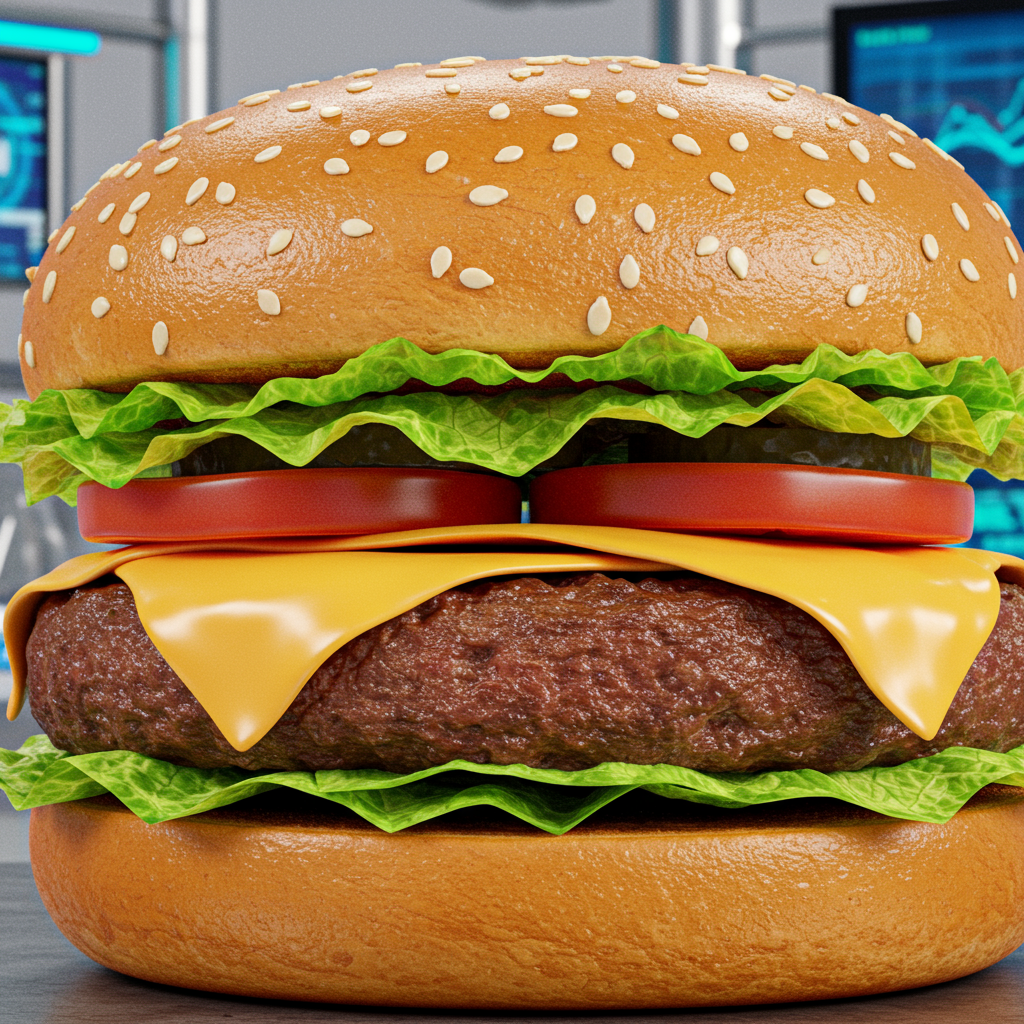Imagine biting into a juicy burger, sizzling with meaty aroma – except the meat wasn’t raised on a farm. It was grown in a lab. This isn’t science fiction anymore; it’s cultivated meat, also known as lab-grown meat or cell-based meat, and it’s sparking a major debate about the future of our food system.
Unlike plant-based alternatives made from ingredients like soy or pea protein, cultivated meat is biologically real meat grown directly from animal cells. Companies are developing everything from steaks and burgers to potential fish products like eel and caviar using this innovative technology.
Cultivated meat is already being sold in select locations globally, including Singapore, the United States, and Israel. Companies in the UK, such as Oxford-based Ivy Farm Technologies, are seeking regulatory approval, with potential products like burgers and sausages potentially hitting menus in the coming years.
The Environmental Promise vs. The Reality
The rise of lab-grown meat is often framed as a potential solution to the significant environmental impact of traditional livestock farming. Global meat production has surged fivefold since the 1960s, reaching an estimated 364 million tonnes in 2023. Producing just 1kg of beef can generate greenhouse gas emissions equivalent to around 40kg of carbon dioxide, depending on the method. Traditional farming also requires vast amounts of land and water, and cattle release planet-warming methane gas.
Advocates argue that cultivated meat can meet growing global demand with dramatically reduced carbon emissions and land use, helping countries meet climate targets like the UK’s suggested 30% reduction in meat consumption by 2032.
However, the environmental benefits are complex and subject to debate. Dr. John Lynch of Oxford University notes that accurate, independent assessments are challenging because large-scale cultivated meat production isn’t happening yet, and company processes are proprietary secrets.
Growing cells in vats requires energy, as does producing the necessary nutrients. While best-case scenarios suggest cultivated meat could generate as little as 1.65 kg of CO2 per kg – significantly better than traditional beef – energy-intensive processes could push this figure as high as 22kg of CO2 per kg, making the climate advantage less certain. Furthermore, the CO2 emissions from energy used in labs persist in the atmosphere much longer than methane from cows, which dissipates after about 12 years. This means that replacing cows with highly energy-intensive lab production might not be better in the long run, though cultivated meat’s minimal land footprint remains a clear benefit. Dr. Lynch concludes that for beef, cultivated meat is “quite viable” to be more environmentally friendly, but the case is weaker for more efficient meats like chicken and pork.
Beyond Sustainability: Processing and Equity
The environmental debate isn’t the only factor. Critics raise concerns about the nature of the product itself.
Ultra-Processed Nature: Lab-grown meat involves complex processes, turning cell paste into something resembling meat by adding nutrients, texture agents, and other ingredients. Some worry this results in an ultra-processed food, with potential unknown long-term health implications.
Multinational Control: There are fears that production could be dominated by a few large companies, potentially shifting food control away from traditional farmers and local systems towards corporate labs.
Equity and Access: Dr. Chris van Tulleken, author of Ultra-Processed People, questions whether cultivated meat truly addresses global food challenges, particularly for vulnerable populations. He suggests that focusing on high-priced, high-income markets driven by investor returns distracts from simpler solutions like reducing overall meat consumption globally. He expresses concern about the trend towards energy-intensive, mass-produced food over sustainable, local whole foods, arguing against imposing a “high-protein slurry” on marginalized groups.
From Lab to Plate: The Production Process and Market Reality
The science involves taking animal cells, growing them in a nutrient cocktail in large vats, and then processing the resulting cell mass into a usable format, often a paste. Turning this into a steak is tricky; simpler forms like mince for burgers and sausages are easier and cheaper to produce first.
Companies like Ivy Farm plan to initially blend cultivated mince with traditional meat mince to reduce costs and make the product more accessible for mass markets. Their CEO notes that even blended products can significantly lower the carbon footprint compared to 100% traditional meat.
Despite regulatory approvals in a few countries, mass production and affordability remain major hurdles. Currently, lab-grown meat is often only available in high-end restaurants or for limited tastings, not yet competing on cost with traditional meat in supermarkets.
Different companies are pursuing various strategies:
Some, like Ivy Farm, aim to replicate popular meats like beef for burgers.
- Others, like Wildtype (salmon) or Vow (Japanese quail), are focusing on niche or novel meats, sometimes creating entirely new products not trying to mimic traditional ones. Vow, for instance, chose quail partly because consumers have fewer preconceived notions about its taste, allowing them to focus on creating a delicious product first, with future potential to add nutritional benefits like Omega-3s.
- www.bbc.com
- www.bbc.com
- www.bbc.com
- www.bbc.com
- www.bbc.com
Industry reaction is mixed. Parts of the US cattle industry have lobbied against it, while others remain neutral or supportive. The seafood industry has shown more openness, recognizing cultivated seafood as part of broader on-land production.
The Deciding Factors: Taste and Price
Ultimately, while the environmental, ethical, and health debates surrounding lab-grown meat are crucial, its future success likely rests on simpler factors for most consumers: how it tastes and how much it costs. Can companies make cultivated meat delicious and affordable enough to compete with traditional meat? That question, more than any scientific promise or environmental claim, may well determine whether lab-grown meat becomes a staple on our plates or remains a fascinating, high-tech experiment.




